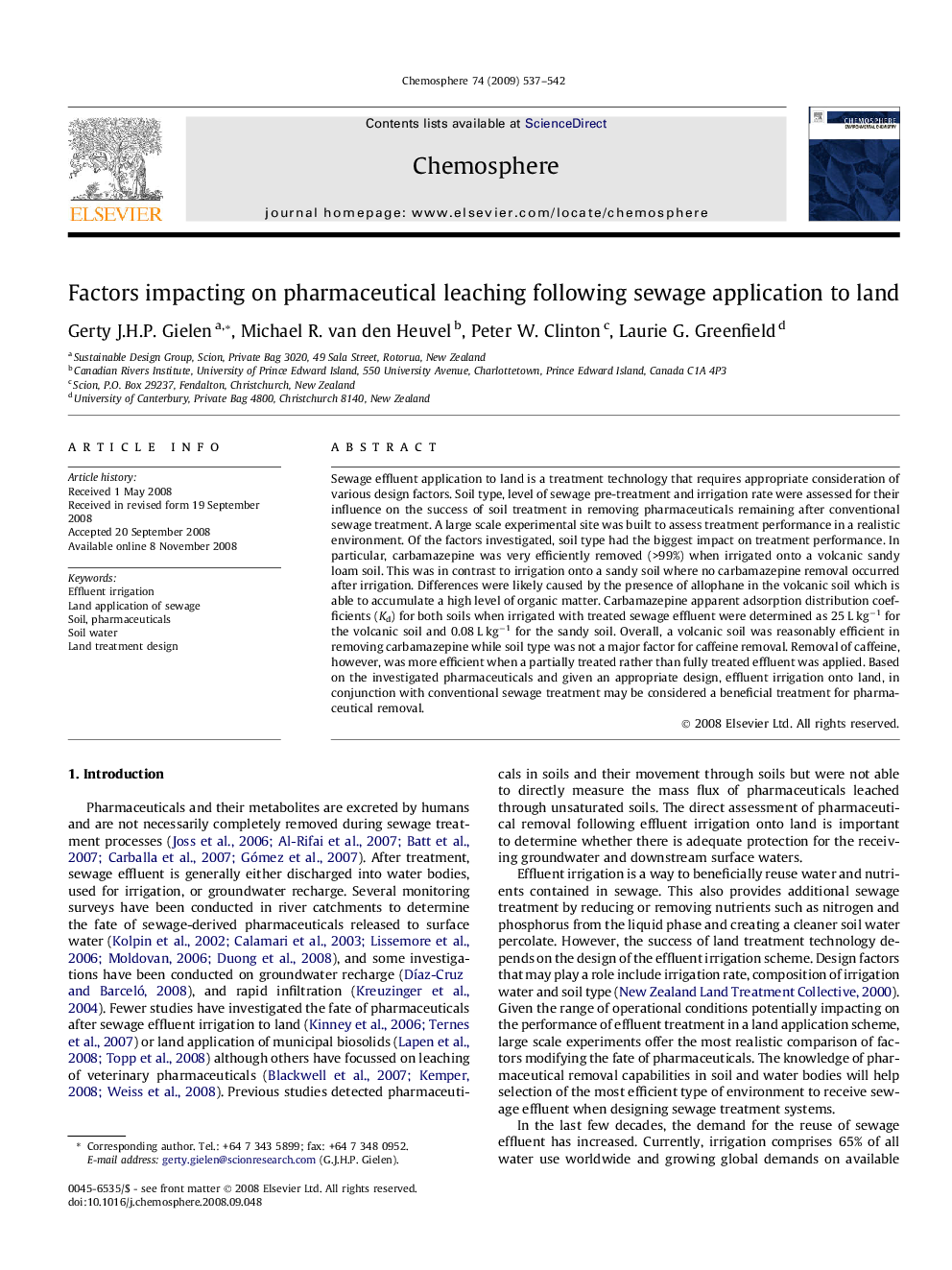| Article ID | Journal | Published Year | Pages | File Type |
|---|---|---|---|---|
| 4412633 | Chemosphere | 2009 | 6 Pages |
Sewage effluent application to land is a treatment technology that requires appropriate consideration of various design factors. Soil type, level of sewage pre-treatment and irrigation rate were assessed for their influence on the success of soil treatment in removing pharmaceuticals remaining after conventional sewage treatment. A large scale experimental site was built to assess treatment performance in a realistic environment. Of the factors investigated, soil type had the biggest impact on treatment performance. In particular, carbamazepine was very efficiently removed (>99%) when irrigated onto a volcanic sandy loam soil. This was in contrast to irrigation onto a sandy soil where no carbamazepine removal occurred after irrigation. Differences were likely caused by the presence of allophane in the volcanic soil which is able to accumulate a high level of organic matter. Carbamazepine apparent adsorption distribution coefficients (Kd) for both soils when irrigated with treated sewage effluent were determined as 25 L kg−1 for the volcanic soil and 0.08 L kg−1 for the sandy soil. Overall, a volcanic soil was reasonably efficient in removing carbamazepine while soil type was not a major factor for caffeine removal. Removal of caffeine, however, was more efficient when a partially treated rather than fully treated effluent was applied. Based on the investigated pharmaceuticals and given an appropriate design, effluent irrigation onto land, in conjunction with conventional sewage treatment may be considered a beneficial treatment for pharmaceutical removal.
